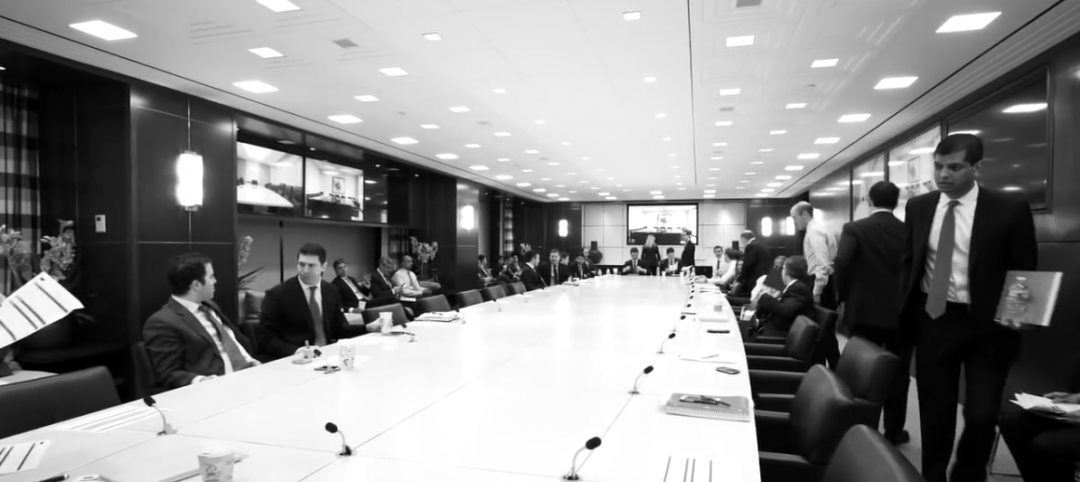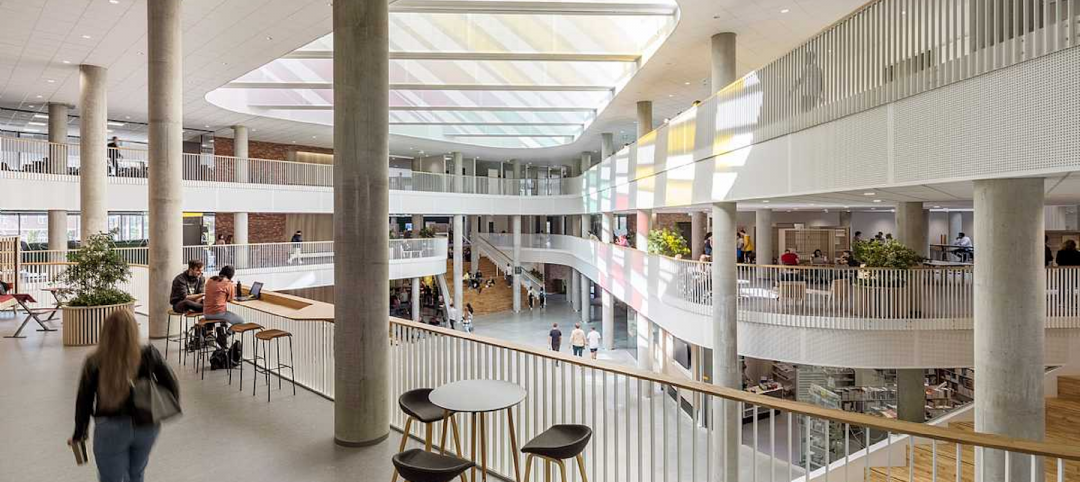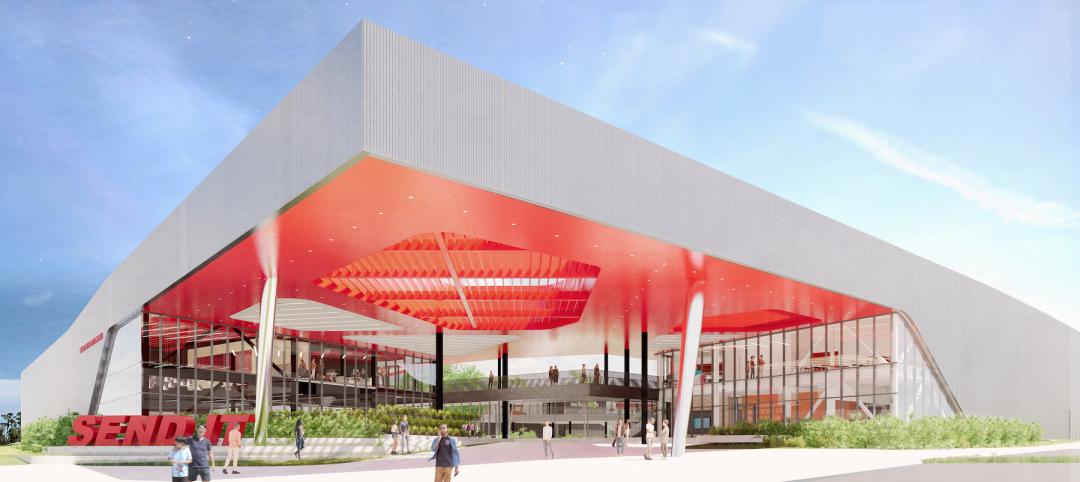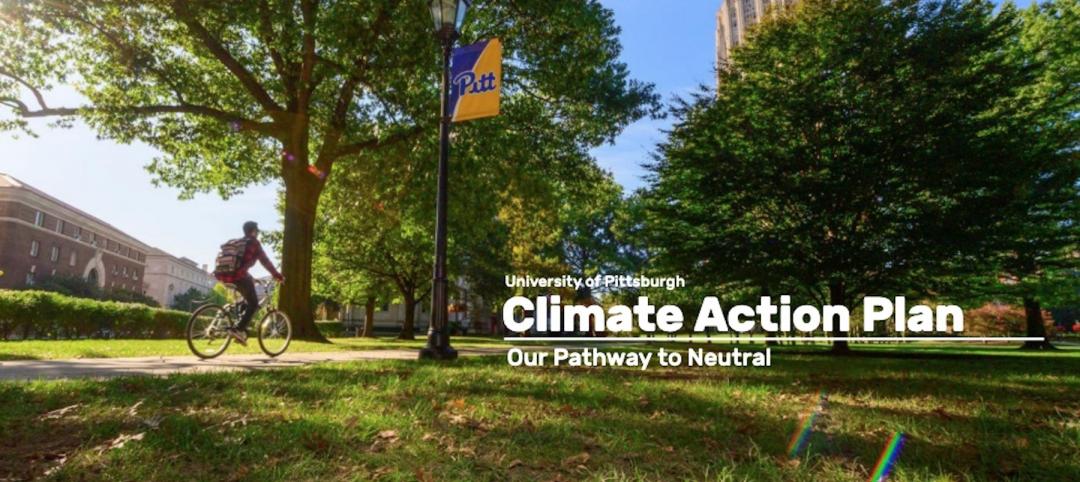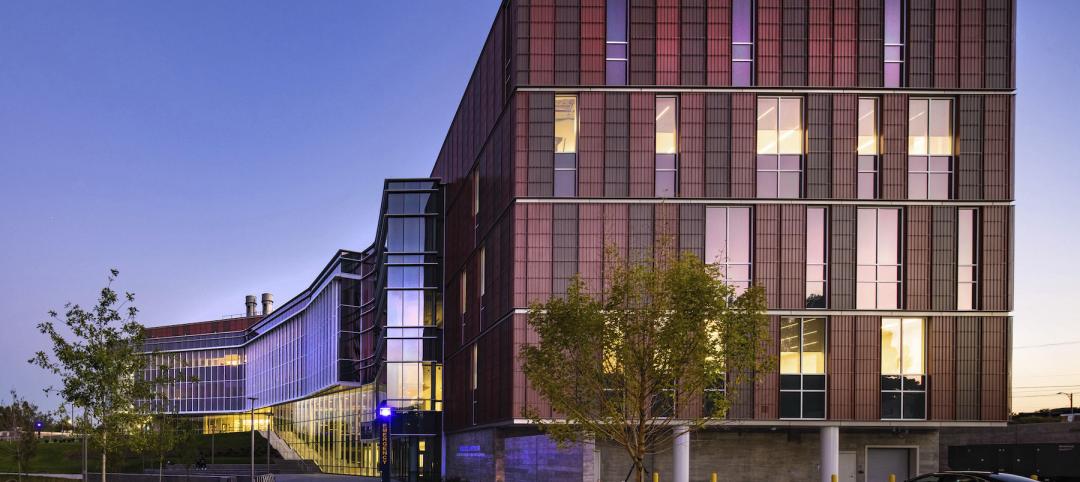
The city of Phoenix has sprawling suburbs, but its outward expansion caused the downtown core to stagnate—a problem not uncommon to other major metropolitan areas. Reviving the city became a hotbed issue for Mayor Phil Gordon, who envisioned a vibrant downtown that offered opportunities for living, working, learning, and playing.
The Mayor's plans for downtown redevelopment involved public-private partnerships, which led him to Arizona State University President Michael Crow. Crow was interested in expanding ASU's presence within the metro Phoenix area (ASU's main campus is in Tempe), so the city and school jointly developed a master plan for a new campus on nine city blocks. In 2006, voters approved $223 million in bonds, with $71 million slated for construction of the Walter Cronkite School of Journalism and Mass Communication, the new campus's first facility.
 |
| The two-story First Amendment Forum serves as the school’s “living room,” with a mezzanine level offering extra seating. Large windows between the forum and adjoining spaces, such as conference rooms and the Library & Student Resource Center, create a feeling that activities are always “on air.” |
The RFP for a design-build team was won by the alliance of HDR Architecture (executive architect), Ehrlich Architects (design architect), and Sundt Construction (GC) and required the team to adhere to an absolute fixed budget and a maximum 20-month timeline from award to occupancy certificate.
The Building Team utilized integrated project delivery and BIM to stay on time and on budget. Among other things, IPD and BIM enabled the Building Team to create detailed cost models instead of cost estimates, so that by the close of business every Friday the project budget was rectified.
IPD also helped with the fast-track schedule by allowing the project to be broken up into multiple packages, each with its own senior IPD leader and production team. The strategy allowed foundations to be poured before the superstructure design was complete and before the exterior skin was finalized. A special team was assigned to acquiring entitlements and building permits to accommodate the project's breakneck pace, and the city helped expedite the review process.
 |
| Studio spaces were built out quickly, but during interior improvements the floors received a top coating to create a camera-friendly flatness. |
The building's basic rectilinear form—a simple 30-foot-square exposed structural concrete column grid, burnished concrete block walls, and insulated cladding—was a practical choice for the project's budget and timeline. It enabled the Building Team to maximize square footage: ASU had a lengthy list of features they needed to squeeze into the six-story, 223,000-sf facility. The Walter Cronkite School of Journalism and Mass Communication is sandwiched between the building's ground floor, which houses the main lobby and retail and restaurant space, and the top floor, which is utilized by the city's PBS station, KAET/Channel 8. The university space includes 12 classrooms, seven working newsrooms, two state-of-the-art television studios, a library, a 150-seat theater-style auditorium, and a 1,500-sf exhibition gallery.
The centerpiece is a large “living room,” dubbed the First Amendment Forum. This two-story space—with mezzanine—is used as a gathering area for students during the day, while in the evening it becomes a public forum for students and industry leaders to engage in discussion and debate. Five hi-def flat-screen televisions and a large hi-def rear projector broadcast the day's news and other events. Walter Cronkite's famous sign-off, “And that's the way it is,” is inscribed on one wall.
To moderate the monolithic effect of the rectangular building, the Building Team sliced off a bit here and there and bumped out stairwells several feet from exterior walls. A combination of thin vertical and long horizontal windows, a wraparound exterior balcony, and multicolored corrugated metal cladding in a pattern inspired by FCC's radio spectrum chart further break up what could be a blocky exterior.
The facility opened in May 2008, and is adjacent to a pedestrian boulevard and across the street from a newly completed high-rise residence hall and a student union created by the adaptive reuse of a historic post office building. The city's new light rail system stops near the main entrance. The downtown now bustles with student life.
The project impressed Building Team Awards judge Dan Huntington. “Twenty months from start to certificate of occupancy on a building this size—that's pretty impressive,” says Huntington, SE, PE, LEED AP, associate principal at KJWW Engineering Consultants in Rock Island, Ill. “They had a very large task put in front of them, and they were very successful.”
Related Stories
Education Facilities | Apr 28, 2022
ProConnect Education (K-12 to University) comes to Scottsdale, AZ, Dec 4-6
ProConnect Education 2022 will attract building product specifiers and manufacturers to the Andaz Resort in Scottsdale, Ariz., in December.
Multifamily Housing | Apr 26, 2022
Investment firm Blackstone makes $13 billion acquisition in student-housing sector
Blackstone Inc., a New York-based investment firm, has agreed to buy student-housing owner American Campus Communities Inc.
Architects | Apr 22, 2022
Top 10 green building projects for 2022
The American Institute of Architects' Committee on the Environment (COTE) has announced its COTE Top Ten Awards for significant achievements in advancing climate action.
University Buildings | Apr 18, 2022
SmithGroup to design new Univ. of Colorado Denver engineering, design, computing building
The University of Colorado Denver selected SmithGroup to design a new engineering, design, and computing building that will serve as anchor of new downtown innovation district.
Market Data | Apr 14, 2022
FMI 2022 construction spending forecast: 7% growth despite economic turmoil
Growth will be offset by inflation, supply chain snarls, a shortage of workers, project delays, and economic turmoil caused by international events such as the Russia-Ukraine war.
Projects | Apr 1, 2022
University complex encourages exchange between academics and residents
In the small Danish city of Horsens, C.F. Møller Architects has created a university complex that unites higher education with urban life—creating synergies among students, staff, businesses, and residents
Projects | Mar 31, 2022
Tech school designed to prepare students for high-wage, high-skill careers
In Wesley Chapel, Fla., a half-hour north of Tampa, Kirkland Ranch Academy of Innovation (KRAI) is “not going to look like anything you’ve ever seen before,” Kim Moore, assistant superintendent at Pasco County Schools, said in a statement.
Energy-Efficient Design | Mar 25, 2022
University of Pittsburgh Releases ‘Pitt Climate Action Plan’
The University of Pittsburgh has released the Pitt Climate Action Plan, detailing how the University will achieve its goal to go carbon neutral by 2037 through investments in clean energy, transportation, efficiency and other areas.
Higher Education | Mar 24, 2022
Higher education sector sees 19 percent reduction in facilities investments
Colleges and universities face a growing backlog of capital needs and funding shortfalls, according to Gordian’s 2022 State of Facilities in Higher Education report.
Projects | Mar 16, 2022
Tomorrow’s STEM leaders get a state-of-the-art research complex
In February, North Carolina Agriculture and Technical State University (NC A&T) opened its new Engineering Research & Innovation Complex (ERIC).



